This is the newsletter version of Sara by the Season, where I explore a little bit of everything that’s on my mind as I try to lean into nature’s wisdom and rhythms. You can listen to me read you the newsletter by hitting play above - or you can click the little link above right to play in your favorite podcast player. If you know someone who would like this sort of thing, I’d be so grateful if you would share it!
A few years ago, the four of us picked a few films to see at the Heartland Film Festival, as is our annual tradition. One of the films we picked that year was The Serengeti Rules (highly recommend it - here’s how to watch), a documentary film about a small group of scientists in the 1960s who discovered1 almost simultaneously in their various corners of the world where they studied what has now become a modern ecological principle: keystone species.
Keystone species are defined as having “a disproportionately large effect on [their] natural environment relative to [their] abundance.” The film discussed many different kinds of keystone species that this group of scientists had studied all over the world, but the one that is most familiar to most of us are the grey wolves and their reintroduction in Yellowstone.
In 1995, due at least in part to the work of this group of scientists from the documentary, wolves were reintroduced to Yellowstone after a nearly 70 year absence. During the wolves’ absence “the entire Yellowstone ecosystem had fallen out of balance. Coyotes ran rampant, and the elk population exploded, overgrazing willows and aspens. Without those trees, songbirds began to decline, beavers could no longer build their dams and riverbanks started to erode. Without beaver dams and the shade from trees and other plants, water temperatures were too high for cold-water fish.” In other words, the extermination of the wolves had a catastrophic effect on the entire ecosystem.
Even the scientists have been surprised at how quickly the ecosystem rebounded after the wolves’ return:
The elk and deer populations started responding immediately. Within about 10 years, willows rebounded. In 20, the aspen began flourishing. Riverbanks stabilized. Songbirds returned as did beavers, eagles, foxes and badgers. “And those are just the things we have the time and funding to study,” said Smith [of the Yellowstone Wolf Project]. “There are probably myriad other effects just waiting to be discovered.”
The wolves were basically eradicated in their natural habitat because they were seen as a danger to humans and livestock (even though the data says otherwise). But in fact, the so-called dangerous wolves were key to promoting ecological diversity in their natural habitats and in maintaining population control of other species that had the potential to throw the ecosystem out of balance.
The indigenous tribes of the Great Plains revered the wolf. The Pawnee who lived in what is now Nebraska and Kansas were even known as “the wolf people” by other tribes. Had we listened to their wisdom about the wolves (as well as at least a thousand other things, let’s be clear), we could have avoided the ecological crisis in Yellowstone.
I hope you like today’s science lesson. The end.
I kid! The reason I’m bringing this up at all is because I keep thinking about keystone species in light of the Alito leak.
Reversing Roe v Wade will have tremendous downstream effects and not just for women, of course. Pro-choice advocates have identified so many of the likely effects, many of which we’re already seeing in states with little abortion access. I’m worried about the activists who will turn their attention from the climate crisis or voting rights or income inequality or public education or fill-in-the-blank to address this, admittedly very pressing, issue instead. I’m wondering about what diversity our ecosystem is losing by having a two party system in which one party votes on largely one issue to the exclusion of all others.
But, like the Yellowstone scientist quoted above about the “myriad other effects just waiting to be discovered,” what I’m wondering about even more are the unforeseen consequences that we haven’t predicted or considered or the ones that are at least not mainstream news.
I find myself thinking about this about all sorts of issues we’re currently facing: the climate crisis first and foremost, rising income inequality, voting rights, gun control, equal rights across the board, the broken aspects of our cultural fabric revealed or exacerbated by the pandemic, the fact that the litmus test for running for office in one of our parties in our two-party system is to deny the reality that their guy lost the last election.
Social media and the media cycle feed us what to be outraged about from one week to the next - and there is plenty to be outraged about, let me be clear. But we can’t continue to be jerked around by the outrage cycle. It’s exhausting, it isn’t sustainable, and it doesn’t actually do much, other than leave us worn down and powerless.
Instead, we need to participate in and support local, grassroots efforts that are addressing systems problems and that acknowledge the shared responsibility for the multiple crises we face. We’ve been trying the top-down approach for the past several decades at least, and it hasn’t been working for a long while now. We have to dig in and start small, local, spread out. We have to care for ourselves and our communities as we lean into this hard work, and that demands honesty about the complexity of the problems we face. It also requires us to get clear about the problems that most light us up.
We treat our politics like an athletic event where there are clear and defined winners and losers, and while that is sometimes the case, if you’ve lived for even a little bit, you know that few things in life produce clear winners and losers. That more often, the consequences of our actions and policies impact us all in foreseen and unforeseen ways because as the Duwamish Chief Si’ahl said, “humankind has not woven the web of life, we are but one thread within it. Whatever we do to the web, we do to ourselves. All things are bound together. All things connect.”2
I don’t know what the answers are from here, but I think part of the solution is to begin recognizing how interconnected we all are and how our collective decisions and policies have long-ranging ripple effects that must be addressed. We must begin listening to local people who have been in the trenches of the particular problem we’re called to and to seek out the people like the native people of the Great Plains who instinctively knew that the wolves played an integral role in the health of all life.
Bob Paine was one of the scientists profiled in The Serengeti Rules and, in fact, is credited with developing the keystone species concept. Of that time in the 1960s that the documentary focuses on, Paine said:
What made this group [of scientists] so special is that each of us has a pretty private part of the world, some large, some small, which we understand and love. To know something intimately one recognizes change, and much of the secret of ecology today is to not only acknowledge change, but to begin to factor out causes. Why is the world we know so well changing?
I think part of the work ahead is to understand and love a particular part of the world, whether that’s a particular corner of the natural world, a particular issue that lights you up, a particular relationship or community you feel drawn to, or some combination of those, so that we can see what is changing and better understand what is needed to help instead of ignoring our interconnectedness to our own peril - as individuals, as humans, and to the more-than-human-world we’re connected with and dependent on.
Rants and Raves
👍 I planted lots of the garden this week, and I am ready for the season ahead of early mornings spent working out in my happy place.
👍 I sat on the couch and read nearly this whole book for Mother’s Day. Highly recommend - both the sitting on the couch all day and the book.
👎 Thanks to working lots in the garden this week, I found three ticks on me. I label ticks like this when I find a tick on one of us, and I made up another batch of this spray (it seems like we usually go through about two batches a season) to leave by the back door to spritz ourselves (and Wendell) with each time we head outside.
Stuff Worth Sharing This Week
“Climate action was ‘for the children’ in the 1990s. ‘We’re not doing this for the children,’ Kate Larsen, an energy analyst at the Rhodium Group, told me after the event. ‘We’re doing this for us!’” A depressing, but necessary read, especially as you think about midterms ahead.
I’m increasingly mesmerized by the world beneath our feet, especially since I’ve been digging in it the past few weeks. Read this to catch some of my obsession.
On pro-life voters, I wrote a little rant a few years ago at the end of this post.
Cheers to wondering about unforeseen consequences in the days ahead,
Sara
Obviously, had we just listened to the indigenous wisdom of people who lived in communion with nature for thousands of years in these places, we would not need scientists to “discover” something that indigenous people already knew and structured their lives and communities around accordingly.
See Chris La Tray’s comment below. This quote has very questionable history/sourcing.

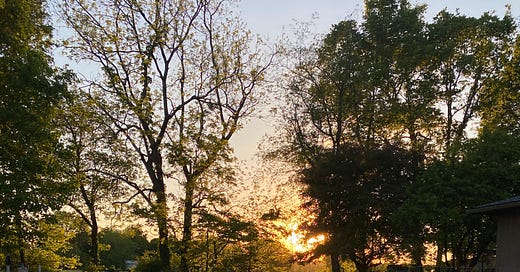





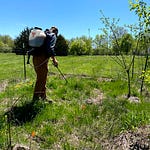
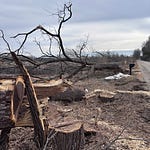
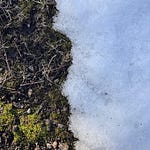
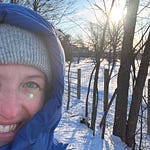
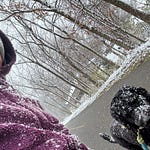
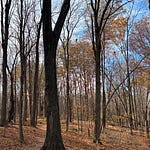
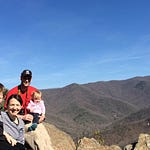
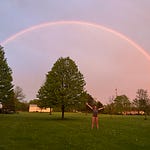
Share this post